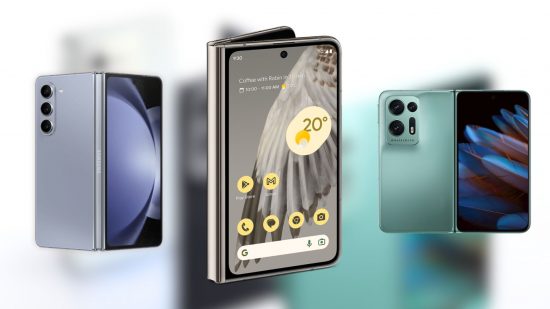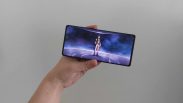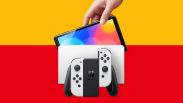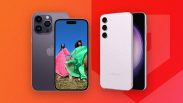The best foldable phones in 2023 all need some key features: decent performance, reasonable battery life, and trustworthy durability. We know that foldables sacrifice some aspects for their unique design – you’re never going to get the best battery life – but they still need to be fundamentally usable.
The good news is, most foldable phones manage this, meaning the market is quite tight, and deciding the best is no easy task. Luckily, us here at Pocket Tactics have bags of experience with mobile phones, so we know the difference between a good and handy piece of tech versus a gimmicky dud. At MWC 2023, foldables were all the rage, and we went hands-on with most of the handsets on this list, so we know how usable they are in hand. So, head below to find our picks for the best foldable phones, and keep in mind we’re talking tablet-style foldables, not the best flip phones here.
Here are the best foldable phones in 2023:
- Samsung Galaxy Z Fold4 – best foldable phone overall
- Oppo Find N2 – best foldable phone alternative
- Google Pixel Fold – best Google foldable
- Tecno Phantom V Fold – most affordable foldable
1. Samsung Galaxy Z Fold4
The best foldable phone money can buy.
Samsung Galaxy Z Fold4 specs:
| Displays | 7.6-inch 120Hz foldable AMOLED (1812 x 2176), 6.2 inch 120Hz AMOLED (cover display, 904 x 2316) |
| Battery | Li-Po 4400 mAh |
| Chipset | Snapdragon 8+ Gen 1 |
| RAM | 12GB |
| Storage | 256GB-1TB |
Pros:
- Nice form factor
- Excellent UI
- Decent cameras
Cons:
- Not all apps optimized
- Might be too tall for some
- Expensive
The Samsung Galaxy Z Fold4 is the best foldable phone you can buy today. With the still-excellent power of the Snapdragon 8+ Gen 1 from 2022, some lovely and reasonably durable 120Hz displays, and a winning form factor, Samsung is really leading the foldable charge.
Of course, as we learned in Samsung Galaxy Unpacked 2023, the Z Fold5 is right around the corner and comes with the improved Snapdragon 8 Gen 2, but until we get our hands on it we can’t be sure it’s a winner. In fact, on paper it looks like a minute upgrade, so the Fold4 might remain the best balance of value for money and performance, assuming deals crop up.
The best bits of the Z Fold4 are the usual things Samsung excels at. The inner display is gorgeous and near edge-to-edge, and using this tablet-style display really does make a big productivity difference. Meanwhile, the cameras, while not flagship-level, are very competitive.
There are some downsides, though these likely come down to personal preference. The form factor of the Z Fold series is notably tall – far taller than some of the competitors – so you may prefer a slightly stubbier offering. Plus, the cost is steep if you’re used to non-foldable prices. Still, it’s the best foldable phone on the market right now.
2. Oppo Find N2
The best foldable alternative if you want a different form factor.
Oppo Find N2 specs:
| Displays | 7.1-inch 120Hz foldable AMOLED (1792 x 1920), 5.54-inch 120Hz AMOLED (cover display, 1080 x 2120) |
| Battery | Li-Po 4520 mAh |
| Chipset | Snapdragon 8+ Gen 1 |
| RAM | 12GB/16GB |
| Storage | 256GB/512GB |
Pros:
- Slightest crease on the market
- Pocketable form factor
- Competitive performance
Cons:
- UI bugs
- Square screen ruins videos
- Hard to find
The Oppo Find N2 is a wonderful foldable thanks to its slight form factor. With this sort of passport-sized design, the Find N2 is easily pocketable, and the outer screen is far more usable than the taller counterparts out there. Better yet, Oppo has managed to reduce the crease on the inner screen slightly beyond the competitors.
Combine this with the Snapdragon 8+ Gen 1, and it competes on power too. There are, at least on paper, very few downsides to the Find N2 – if you prefer the form factor, it’s a very easy recommendation. That is, however, until you start using it.
This is no dramatic downside – most foldables struggle here – but the inside screen of the Find N2 is almost perfectly square, meaning various Android apps struggle. What’s worse, the aspect ratio is completely useless for watching videos, something many people may want to do on the big screen a foldable offers.
Combine this with the fact that Oppo doesn’t even seem to sell the device anymore, and it might be a little hard to find. Still, we prefer it to Google’s offering primarily because of its form factor and the preferable Snapdragon chip. It’s a tight competition, but if you don’t want a tall foldable, we’d go here.
3. Google Pixel Fold
The best Google foldable.
Google Pixel Fold specs:
| Display | 7.6-inch 120Hz foldable OLED (1840 x 2208) 5.8-inch 120Hz cover OLED (1080 x 2208) |
| Battery | Li-Po 4821 mAh |
| Chipset | Google Tensor G2 |
| RAM | 12GB |
| Storage | 256/512GB |
Pros:
- Best cameras in a foldable
- Neat form factor
- No gap when folded
Cons:
- Very expensive
- Notable crease
- Imperfect UI
As with all foldables, the Google Pixel Fold hasn’t quite perfected the user interface – though it’s getting close. What it does offer, however, is an excellent camera setup that we’d pick as the best of the foldable bunch – which is a big benefit for sure.
Meanwhile, the form factor may be preferable to you, with the outer display feeling more usable thanks to the phone’s thinness when closed. There’s also no gap when it’s folded, which helps everything feel neater and more sturdy.
Still, it’s Google’s first attempt at a foldable, and you can definitely tell. We’d trust Samsung’s durability over the Pixel Fold, simply for its experience in this area. Meanwhile, the Tensor G2 chip inside isn’t quite as capable as the Snapdragon in competitors’ foldables – and this gap will only increase with the fifth generation of Samsung’s Z series.
Oh, and the Google Pixel Fold is the most expensive foldable on the market at the moment. It offers a lot, but it’s hard to feel that the extra money is worth it, especially in such a closely matched market.
4. Tecno Phantom V Fold
The most affordable foldable on the market.
Tecno Phantom V Fold specs:
| Display | 7.85-inch 120Hz AMOLED (2000 x 2296), 6.42-inch 120Hz AMOLED (cover display, 1080 x 2550) |
| Battery | Li-Po 5000 mAh |
| Chipset | MediaTek Dimensity 9000+ |
| RAM | 12GB |
| Storage | 256/512GB |
Pros:
- Competitively priced
- Good performance
- Pleasant design
Cons:
- Big and thick
- Poor cameras
- Software support
- Very hard to come by
The Tecno Phantom V Fold is the most-affordable foldable on the market – though it’s by no means cheap. At around $1,000, it’s still a bit of a bank-account buster, but it does have some nice features to make it worth it, primarily the competitive MediaTek Dimesnity 9000+ SoC, arguably the best-performing chip in this list.
Combine that with the size of the thing, which, while a definite downside in terms of day-to-day ergonomics, does also offer the biggest screens in this list, too. The outer screen is reasonably usable due to its aspect ratio, though the phone’s thickness does diminish this slightly. Overall, it’s a neat little package for the price.
On the other hand, the affordable price does come with some drawbacks. The cameras are passable at best, so don’t come to the V Fold for an ace snapper. Meanwhile, Tecno makes no security update guarantee, meaning you don’t know how long your new, expensive purchase will be supported – something Samsung excels at.
What’s worse, you might not even be able to find the handset. While it’s admirable, especially at its low price, the Tecno doesn’t officially ship in the US. So, if you want one, you might have to look at alternative methods that could push the price up a bit, thus the phone loses one of its main benefits.
Read our Tecno Phantom V Fold hands-on.
How do we choose the best foldable phones?
While the foldable market is quite tight at the moment, we have some clear ways to separate the wheat from the chaff. Primarily, we think about longevity and usability – how long are you going to be able to use this phone for? Durability concerns are still a big issue with foldables, so that’s always top of the list.
Then there’s usability, something thicker foldables struggle with. What’s the point in having two screens if the one on the outside is hard to use with one hand? So, again, we have to take into account how the design, build, and handling of the handset affects the aspect ratio, changing how Android reacts and how it feels to watch videos.
Then, there are the basic things any mobile phone needs, like decent performance, a good screen, and an overall pleasant experience. Luckily, all the current foldables have pretty closely matched chips, equally excellent screens, and only slight differences in the user experience, all of which we note down. Learn more on our how we test page.
How do I choose the best foldable phone for me?
If you’re struggling to choose between the best foldable phones, there are some things you can do to make it easier. First and foremost, what’s your budget? If you only have $1,200 to play with, you’re going to have to go with the Tecno Phantom V Fold.
The second thing is the form factor – what sort of phone do you want to use? If you can’t get into a store to test out how the handsets feel (something we highly recommend with foldable phones), think about how your current phone feels in the hand. If it’s a big phone, like the S23 Plus, you should be okay with the Z Fold4. If it’s smaller, like the standard S23, you might struggle with all the foldables on this list – though the best would be the Oppo Find N2.
Keeping in mind everything that you need in a phone is key here – the primary benefit of a foldable is a big inner screen. If you already have a tablet or don’t think you’ll make use of a bigger screen, maybe you don’t even need a foldable phone. This is still pretty new tech after all, and even with recent improvements, there are inevitable imperfections that arise with the exciting folding screens. Make sure you actually need one in the first place, and you should be fine.
Don’t forget that there are more foldables on the way, with OnePlus Open release date rumors suggesting the new handset is right around the corner.
If you’re not sure that a foldable phone is for you, we’ve rounded up the best Samsung phones, best Xiaomi phones, best Motorola phones, best Google Pixel phones, and best Sony phones. Or, if all those Android devices don’t get you going, we’ve also compared iPhone vs. Android to help you decide between the two.
















